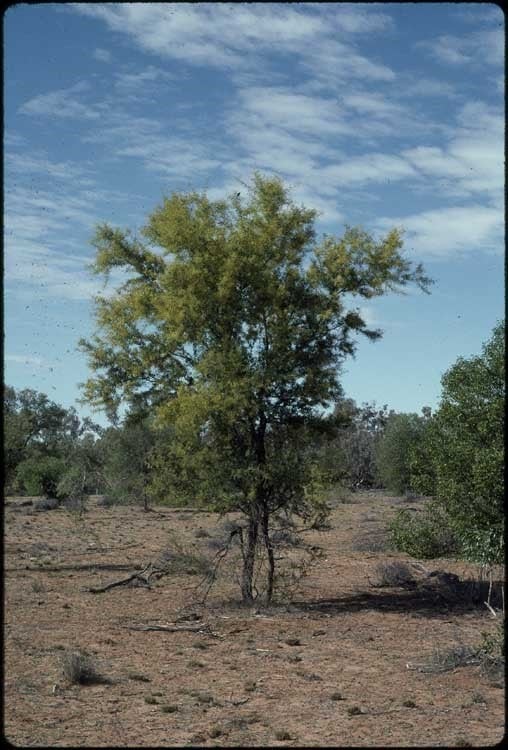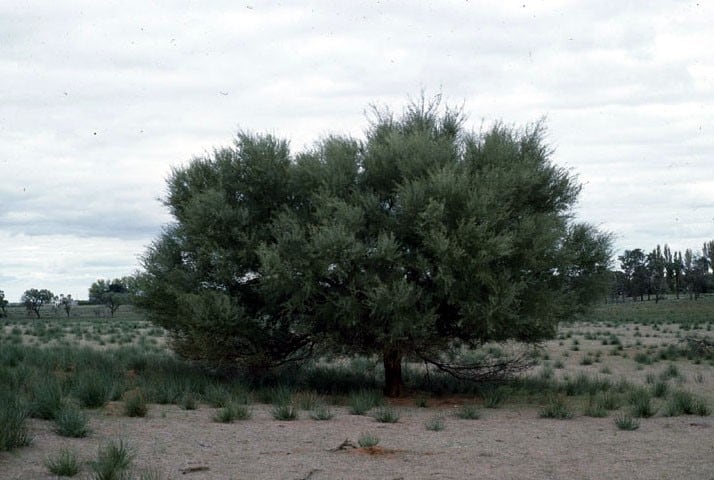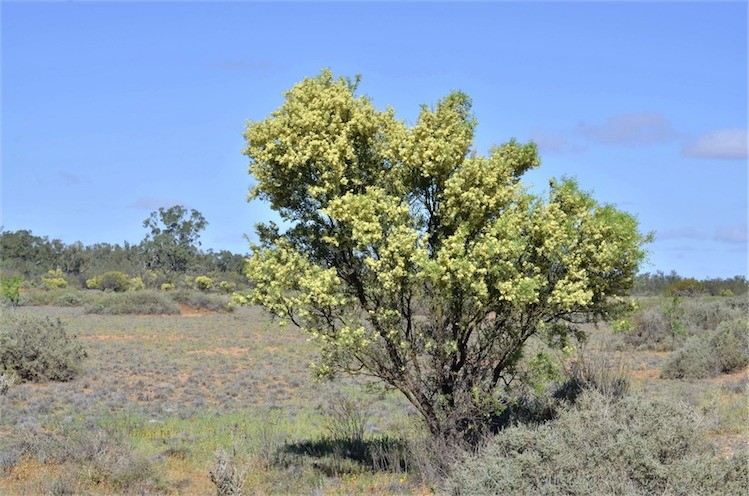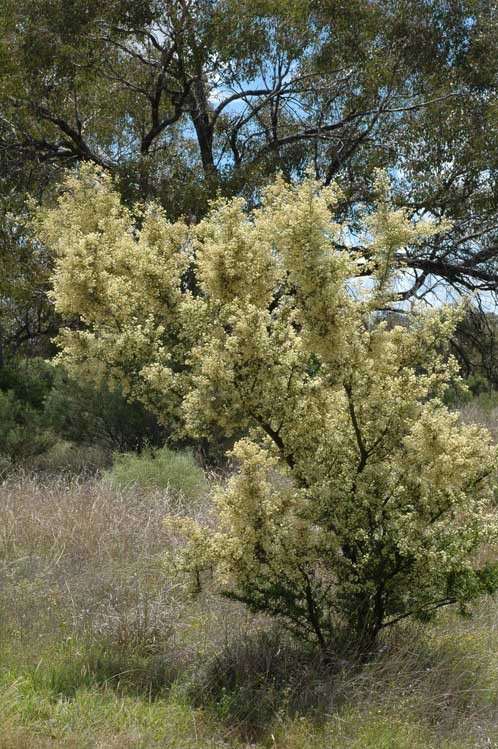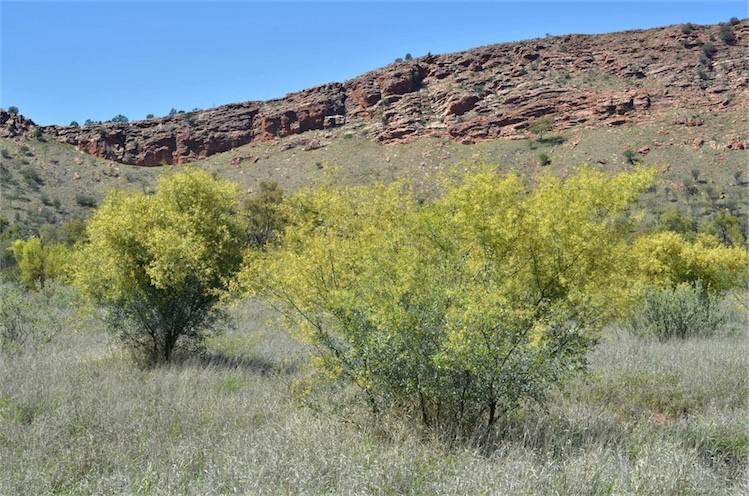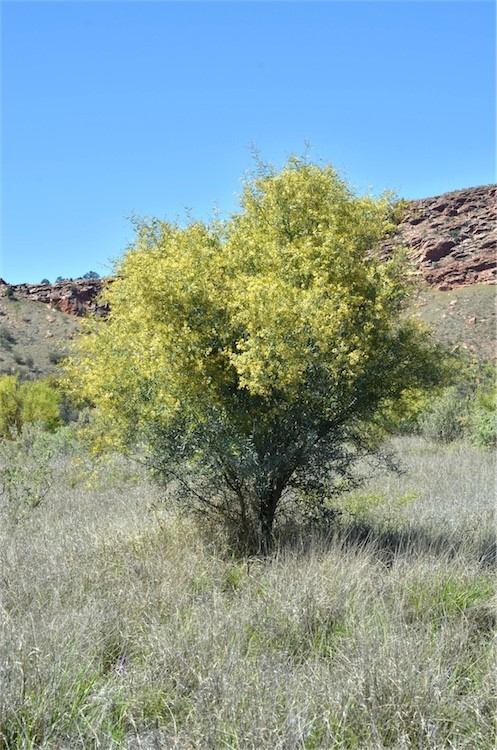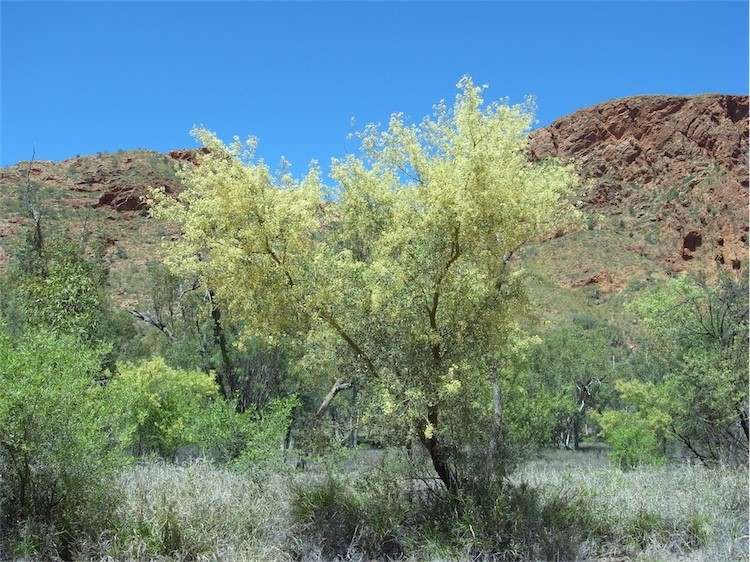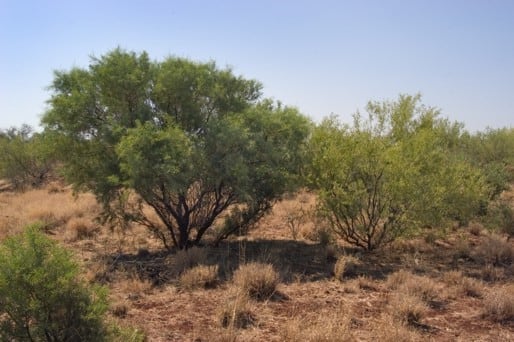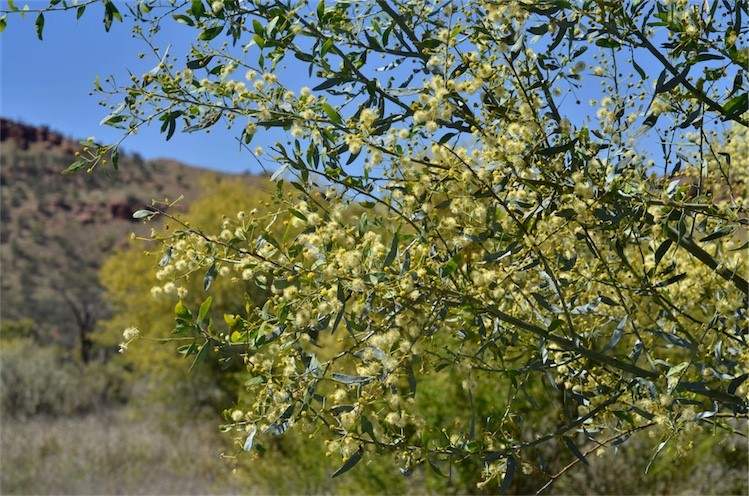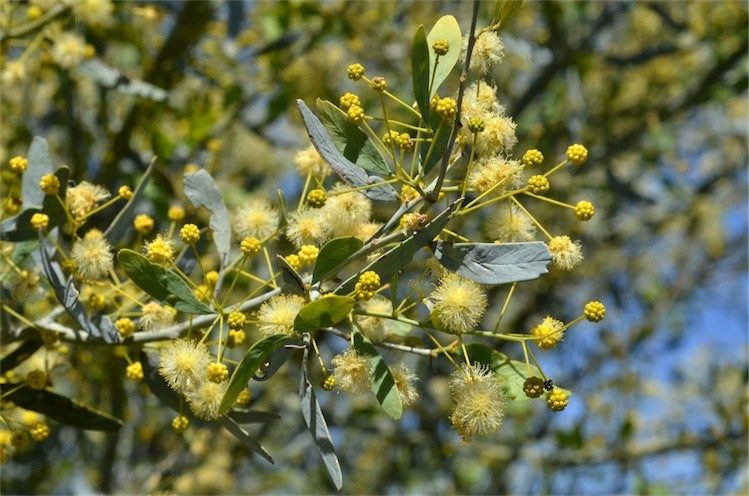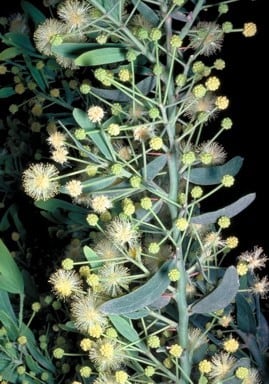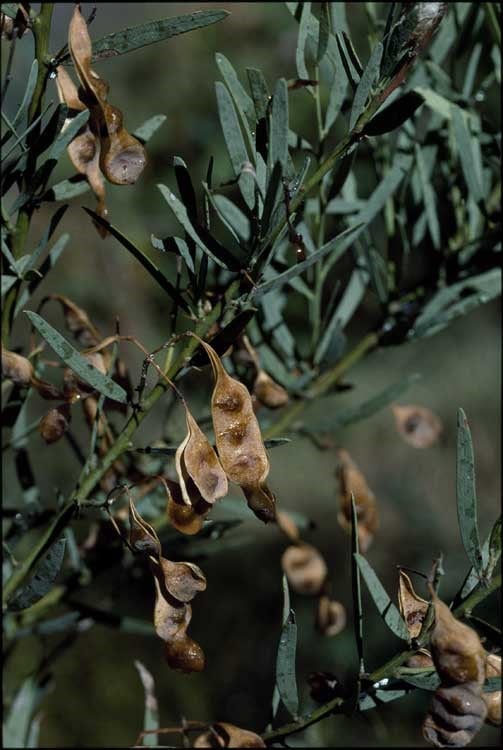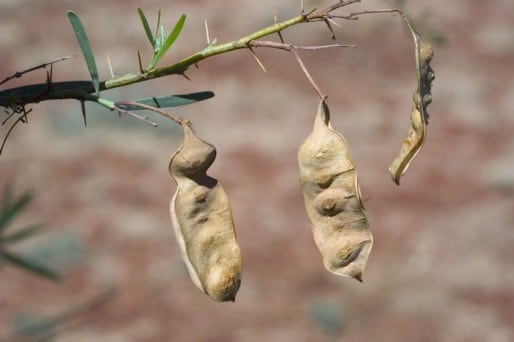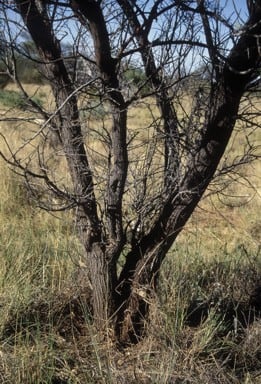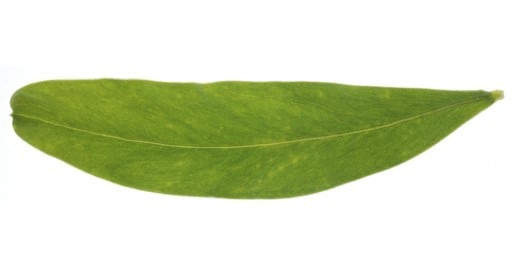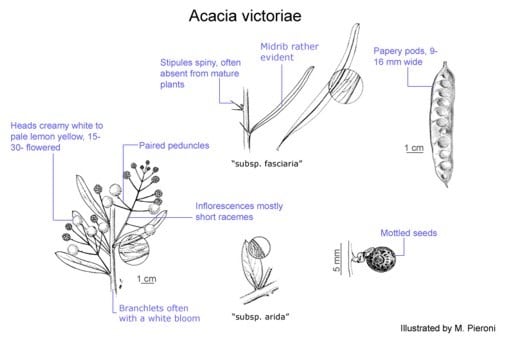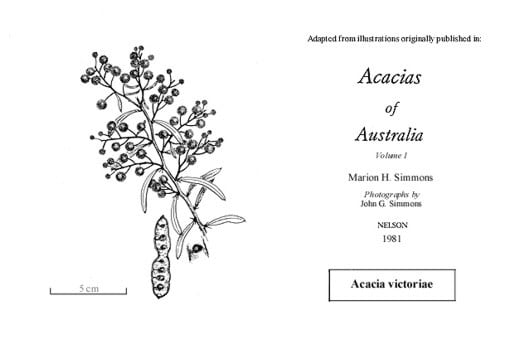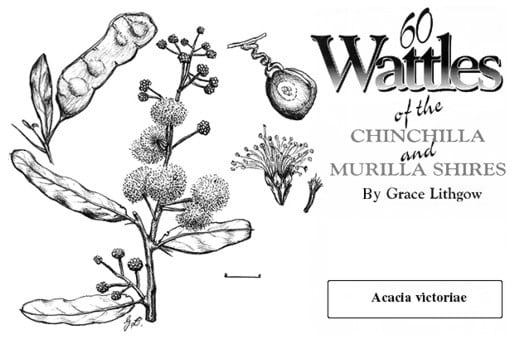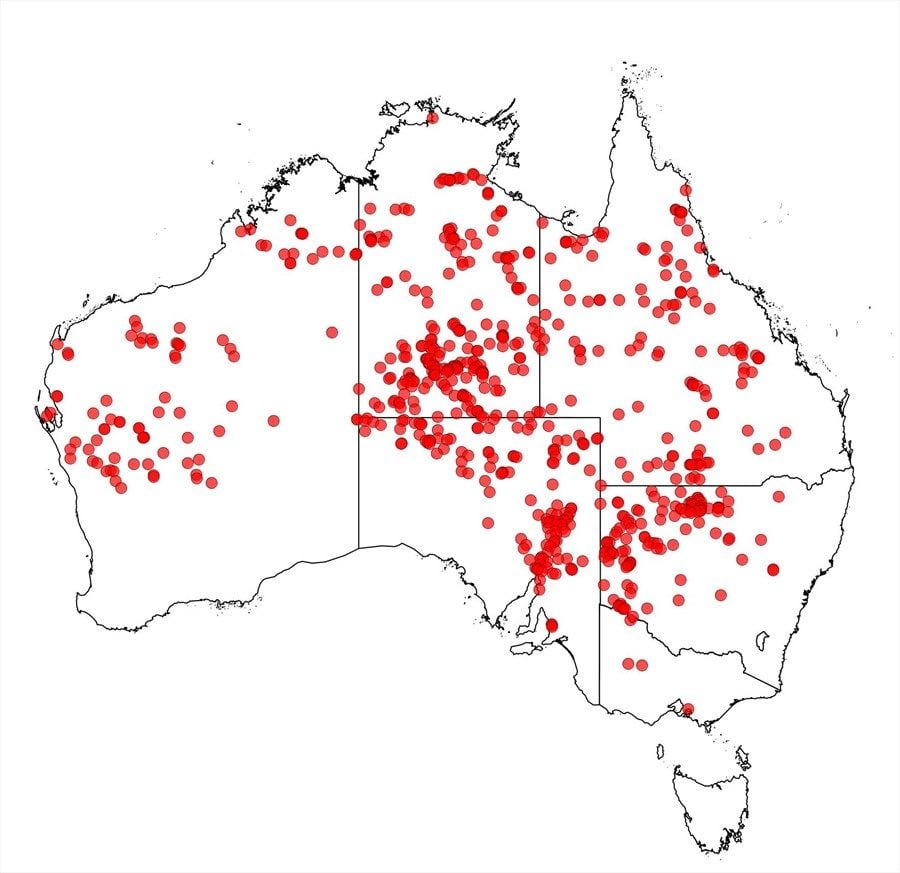Acacia victoriae Benth.
WATTLE
Acacias of Australia
Common Name
Elegant Wattle, Bramble Wattle, Prickly Wattle, Gundabluie, Gundabluey, Narran and others, fide G.M.Cunningham et al., Pl. W New South Wales 375 (1981)
Family
Fabaceae
Distribution
Widespread in all mainland States except Vic. where it occurs only in the far north-west.
Description
Shrub or tree 2–5 m high, sometimes to 9 m. Branchlets often pruinose, glabrous, sometimes hairy. Stipules spinose, commonly only bases persisting at mature nodes, 2–12 mm long. Phyllodes variable, linear to narrowly oblong, lanceolate or narrowly elliptic, straight or incurved, (1.4–) 2–5 (–10) cm long, 2–8 mm wide, l:w = 2–13 (–25), green to grey-green or glaucous, usually glabrous; midrib prominent; lateral nerves usually obscure; gland ±basal, obscure or prominent. Inflorescences normally racemose but peduncles sometimes subtended by a secondary phyllode; raceme axes 1–10 cm long, slender; peduncles mostly twinned, 6–18 mm long, slender, glabrous, sometimes hairy; heads prolific, globular, 15–30-flowered, creamy white to pale lemon-yellow. Flowers 5-merous; sepals free, narrowly spathulate. Pods narrowly oblong, to 8 cm long, 9–16 mm wide, chartaceous, glabrous. Seeds transverse, ±globose, 4–6 mm long, brown, mottled blackish; funicle short, thick, scarcely arillate.
Habitat
Arid and subtropical areas in a variety of habitats but commonly in clay or loam on alluvial flats, and (especially plants identified as subsp. arida) in sand.
Specimens
W.A.: 8 km S of Mt Anderson, near Fitzroy R., T.E.H.Aplin 5168 (BRI, K, PERTH); 66 km from Wittenoom towards Roebourne, B.R.Maslin 2729 (AD, DNA, PERTH). N.T.: Lake Amadeus, P.K.Latz 5705 (PERTH). S.A.: c. 130 km along Rig road, E of Purnie Bore, Simpson Desert, B.Maloney 12/83 (PERTH—subsp. arida); Black Oak Ck, 62 km SE of Pimba, L.Thomson 48 (PERTH). Qld: 56 km S of Boulia on road to Birdsville, B.Maloney 20/70 (PERTH). NSW: 8.4 km E of Pulgamurtie HS, G.A.Parr-Smith 1263 (PERTH—subsp. arida). Vic.: Sunset Desert N of Birthday Tank, Sunset Country, far NW Vic., J.Luly ANU30086 (MEL).
Notes
A variable species. Acacia victoriae subsp. arida and subsp. fasciaria are recognized in some herbaria but are provisionally not recognized here because further study is need to better characterize them and to confirm their taxonomic status. Variation in subsp. arida is discussed by B.R.Maslin, Fl. Australia 11A: 377 (2001), and in that place subsp. fasciaria is represented by long-phyllode individuals cited for the Kimberley region (W.A.) and Qld. The taxonomy of the ‘A. victoriae group’ is discussed in B.R.Maslin, Nuytsia 8: 285–309 (1992) where the above-mentioned subspecies are shown in figs 7K and 7B respectively.
In the absence of flowers A. victoriae may be confused with A. synchronicia, or when phyllodes are long and linear, with A. alexandri; A. glaucocaesia may ultimately be better placed within A. victoriae. Acacia victoriae is distinguished from A. murrayana by its commonly shorter phyllodes which lack apical glands, spinose stipules, twinned peduncles and mottled seeds.
The ‘A. victoriae group’ appears closely related to the ‘A. pyrifolia group’.
This species is of moderate nutritive value and a useful stock food supplement during droughts. It is also useful as a low windbreak and for soil stabilisation in dry country, especially as it can readily regenerate from suckers and sometimes forms thickets. Numbers may increase markedly during a succession of wet seasons and can become a nuisance, especially around watering points. The utilisation and ecology of the species are fully discussed in J.W.Turnbull (ed.), Multipurpose Austral. Trees & Shrubs (1986). The foliage and range condition indicator values of A. victoriae are discussed by A.A.Mitchell & D.G.Wilcox, Arid Shrubland Pl. W. Australia 290 (1988). Further information on the biological and ecological features, and the utilisation potential, of this species is given in B.R.Maslin and M.W.McDonald, AcaciaSearch: Evaluation of Acacia as a woody crop option for southern Australia, RIRDC Publication No. 03/017, 222–226 (2004).
FOA Reference
Data derived from Flora of Australia Volumes 11A (2001), 11B (2001) and 12 (1998), products of ABRS, ©Commonwealth of Australia
Author
B.R.Maslin
This identification key and fact sheets are available as a mobile application:
URL: https://apps.lucidcentral.org/wattle/
© Copyright 2018. All rights reserved.
